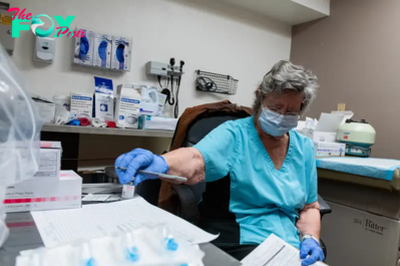Health
Scientists have found a secret 'switch' that lets bacteria resist antibiotics — and it's been evading lab tests for decades
In 2021, a man in his 50s was transferred to the intensive care unit at Emory University Hospital in Atlanta. He was in septic shock due to a bacterial infection that had spread to his bloodstream. The culprit? Klebsiella pneumoniae, which was resistant to most antibiotics.
Finally, hope emerged: A two-week course of an antibiotic called cefiderocol seemed to clear the infection. But just 10 days later, the man was rushed back to the ICU, where doctors discovered a pus-filled mass covering his liver. The same bacteria had returned with a vengeance.
The doctors sent the patient's blood sample to David Weiss, a microbiologist at Emory Antibiotic Resistance Center. Weiss discovered that the bacteria were now highly resistant to cefiderocol.
He quickly notified the doctors. But even after switching antibiotics, the man died.
The man's case highlights an elusive strategy that bacteria use in their arms race against antibiotics — a hidden type of resistance that can be switched on almost instantly but leaves no genetic trace. And it can be almost impossible to detect using standard lab tests. Researchers are increasingly recognizing that this bacterial strategy, called "heteroresistance," may play a significant role in antibiotic failures. Recognizing this bacterial strategy, experts say, is the first step in fighting it.
"While this is a worrisome phenomenon that we're studying now, in the big picture and in the future, I think we'll be able to use this knowledge to greatly help patients," Weiss told Live Science.
RELATED: Superbugs are on the rise. How can we prevent antibiotics from becoming obsolete?
-

 Health1d ago
Health1d agoPeople Aren’t Sure About Having Kids. She Helps Them Decide
-

 Health1d ago
Health1d agoFYI: People Don’t Like When You Abbreviate Texts
-

 Health1d ago
Health1d agoKnee problems tend to flare up as you age – an orthopedic specialist explains available treatment options
-

 Health2d ago
Health2d agoThe second Trump presidency could mean big changes for health insurance in Colorado
-

 Health2d ago
Health2d agoIs It Time to Worry About Bird Flu?
-

 Health2d ago
Health2d agoJared Polis praises Trump for choosing anti-vaccine activist Robert F. Kennedy Jr. as health secretary
-

 Health2d ago
Health2d agoJohn Cena’s Workout Routine And Diet Plan: How The WWE Superstar Stays In Shape
-

 Health2d ago
Health2d agoSleep Doctors Share the 1 Tip That’s Changed Their Lives


























